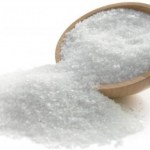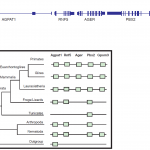liver
Naturopathy and naturopaths are a fairly frequent topic on this blog—and for very good reason. If there is an example of a pseudomedical "discipline" that has been gaining undeserved "respectability," it's naturopathy. It's licensed in all too many states, and physicians who have fallen under the spell of so-called "integrative medicine," a specialty that rebrands science-based lifestyle medical interventions as somehow "alternative" or "integrative" and uses them as a vessel to "integrate" quackery into medicine, seem to have a special affinity for naturopaths. Indeed, so common has the…
Figure 1 showing RAGE (aka: Ager) expression only in mammals from Sessa et al., PLOS ONE. 9(1): e86903, 2014.
RAGE stands for "receptor for advanced glycation end-products", also known as "AGER", and new research shows that it first appeared in mammals (Sessa et al., 2014). Despite the name, the receptor also binds other signaling molecules such as HMGB1, S100 proteins, beta-amyloid, phosphatidylserine, among others (Xie et al., 2013). RAGE is reportedly involved in diabetes, cardiovascular disease, atherosclerosis, osteoarthritis, cancer, Alzheimer's disease, as well as liver and renal…
Image source: AKIKO KUMAGAI & ATSUSHI MIYAWAKI as posted in Scientific American
Dr. Miyawaki from the RIKEN Brain Science Institute in Wako, Japan and colleagues have identified the first example of a muscle protein in Japanese freshwater eels (Anguilla japonica) that fluoresces under special circumstances that may lead to improved medical testing (photo above). The researchers have isolated the protein they named UnaG (after "unagi", the term for freshwater eel in Japanese). What is unique about this protein is that it fluoresces under low oxygen conditions and when it binds to…


